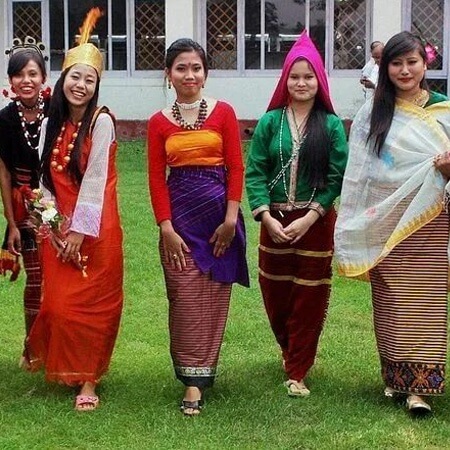
Every thread in India has a story to tell, every garment has an essence of heritage, history and cultural identity. From the
rich silk sarees of Tamil Nadu to the delicately embroidered ghagras of Rajasthan, traditional attire is as varied as the country itself. The clothing patterns differ from one state to another and are influenced by geography, climate and traditions. Whether it's Kashmir's flowing Pherans that keep the winter chill at bay or Bengal's breezy cotton sarees that keep the hot summers at bay, Indian attire is a perfect blend of practicality and elegance.
In this article, we'll take a look at the
Traditional Costumes of various States in India and explore the design, craftsmanship and cultural significance behind each ensemble. Whether you're a
fashion student researching regional textile techniques or simply curious about India's fashion history, this guide will provide an insightful look at the vibrant and complex world of Indian fashion.
India's traditional costumes vary by state, reflecting climate, culture and heritage. This guide explores attire from Kashmir to Kerala...
Traditional Costumes of West Indian States
Western India's traditional costumes burst with color and craftsmanship. This region features some of India's most recognizable styles - Gujarat's mirror-worked ghagras, Maharashtra's distinctive Nauvari saree and the tribal textiles of Madhya Pradesh. Portuguese influences in Goa add a unique flavor, while Chhattisgarh's Batik work showcases indigenous artistry. Each state blends practicality with beauty, creating attire that honors tradition while reflecting the vibrant spirit of West India.
Goa
A Saree, 9 yards long referred as Pano Bhaju is the traditional dress of the folk women in Goa. They wear little jewellery to maintain the perfect balance for the outfit. Fishermen are generally seen wearing bright cotton shirts with half pants. The tribal people drape a blanket around their shoulders worn over a Kashti, a loincloth. The women have a very distinctive style as they wear a traditional Saree with a tied knot using their Kunbi Palloo. Goan Catholics follow a mix of Indian & Portuguese dressing. Catholic women wear dresses and gowns. Brides go for a Virgin White Gown for their wedding day whereas Men wear Western Style Suits.
Gujarat

Gujarat is another state which have
bright color in their costume. It has a mixture of costume, since it has an influence of both
Rajasthan & Uttar Pradesh. In female garment both
Saree & Ghaghra are popular. The saree is worn over a petticoat. The difference is that the petticoat of Gujarati women's are tailored with great care and much decoration. Gujarati style of wearing the saree is similar to the style of
Uttar Pradesh. The front pleats are shown very elaborately. The Gujarati saree are mainly
8-9 yards in length and almost half of this goes into the pleats. The
Choli is worn along the saree and is open at the back and fastened with strings, very tightly.
The saree of Gujarati ladies are
richly bordered. The borders are either heavily printed or woven along the length. The fabric of Gujarat are famous for their beautiful designs. Another prominent garment is
Ghaghra, Choli and Orhna, which are well decorated with beautiful designs with
Kutch work and
Mirror work mainly use for ceremonial occasions. They use
nose rings and
toe rings after marriage and they also give importance to
Mangalya Sutra which hangs on a black beeded chain. Sometimes they wear anklets too.
The male garment of Gujarat have two pieces. The upper garment is
short fit Kurta with gathers at the down portion.
The length of kurta is just up to the waist or just above the thigh. The lower garment is
Dhothi but they also use a tight fit salwar. The dhothi is mostly tucked at the back waist.
They use
turban as the head dress, which is almost similar to that of
Rajasthan. During wedding ceremony they also wear
Sherwani.
Maharasthra

The female garment is 2 piece garments - the saree and blouse. The saree is long length of fine cotton with bright color. It has prominent border at both the sides and the pallu will be same as the border. To drape this saree there is no need of a supporting garment or a petticoat. It is draped in such a manner that the 2 legs have separate passage as the of a Dhothi. The saree is first tuck at the waist and is taken cross wise through each leg till the end of the leg which is tucked at the back. The remaining portion is taken from the back and put in the same manner and as normal drapping style. The border of the saree is prominently shown by drapping in between the legs. Sometimes the remaining pallu which usually hangs down the shoulder is taken over the head. The main ornament of married women is Mangal Sutra which is always put on a black beaded chain. They also use toe-rings and nose-rings. It is a small round shape ring which is exposed to the outer side and is called Nathini. During special occasions, they wear another nose-ring on the nose ridge. Maharashtrian ladies usually wear pearl ornaments.
The men garment consists of a lower and upper garment. The lower garment is
Dhothi which is tuck at the back and the upper garment is a tight fit shirt with short sleeves. Along with this certain special community especially fishermen uses another type of garment. In this, the women garment is similar to that of normal Maharashtrian style. The length of the saree is just below the knees. The male costume has an upper garment and the lower garment which is made of short length fabric and is wrapped around the waist, in such a manner that the front gives a
'V' shape and the length is up to the knees and the back is covered till the mid thigh or just below the hips.
The upper garment of the ladies is
Choli which doesnot have any fastners at the lower portion the waist wide is extended with the same fabric of the garment and is tightened by knotting. The Maharastrain ladies usually tuck their hair and occasionally put
flowers.
Chhattisgarh
In Chhattisgarh, women prefer to wear sarees in the
Kachmora style, which is a local
fashion trend. These sarees are knee-length and are known as
Lugda and they are usually paired with a pullover called
Polkha. The tribal men of the region wear sleeveless jackets over dhotis made from cotton, jute or linen. They also wear cotton headgear to protect themselves from the sun.
The tribal women of Chhattisgarh prefer brightly colored sarees made from a variety of fabrics such as linen, silk and cotton. They use
various dyeing techniques, including the popular tie and dye technique known as Batik.
Maheshwari,
Chanderi Silk,
Odisha Silk and
Batik Sarees are popular among the women of the region.
Madhya Pradesh
The traditional attire of Madhya Pradesh consists of simple yet elegant clothing. Men wear a
white cotton dhoti with short-sleeved, collarless cotton shirts called
salukas. Over the salukas, they wear jackets called
mirzai or
bandi and adorn brightly-coloured turbans called
safa on their heads.
Women wear Lehenga, a heavy, ornamented long skirt and the blouse called Choli, along with an Orni or Lugra, a long, light cloth draped over the head and around the shoulders. The state is famous for its
Bandhani cloth or Bandhej sarees, but women mostly prefer to wear lehenga with choli and the Lugra.
Dadra & Nagar Haveli
Dadra and Nagar Haveli is yet another place were the costume has its influence from the
Portuguese Culture.
Dodhia, Kokna and Varli are the major tribes found at Dadra and Nagar Haveli. Men here wear a
waistcoat and a
shirt with a
long Dhoti. The tribal people also wear a headgear called
Varli.
Women wear
Lugden which goes up to the knees. Women of the Varli tribe use to cover their body with a cloth known as
Padar. They also wear lot of ornaments made of
silver and black metal.
Tattoos over body are also seen among the
tribal women. Both men and women flaunt beautiful costumes in a wide range of colours, designs and patterns.
Traditional Costumes of North-East Indian States
Traditional costumes of North-East Indian states reflect diverse tribal heritage. Unlike mainland India's saree culture, the region features wrap-around garments like Assam's Mekhela Chador, Manipur's Phanek and Nagaland's tribal shawls. Handwoven textiles with geometric patterns and bold colors represent tribal identity and cultural pride across seven sister states.
Arunachal Pradesh
Arunachal Pradesh is a tribal state where socio-culture life blends many traditions and cultures. There are different dressing styles in various parts of the state among various tribes. Geometrical patterns like angular designs and zig-zag lines and stripes are most popular here. The type of designs and colors states the symbolic meaning of each tribe. Women wear a full sleeve jackets, sleeveless garment with embroidery with a skirt or petticoat accompanied with a waistcoat or a Mushaiks. Gurdam, a skull cap filled with Yak hair is used as a headress. During ceremonial occasions as a part of social status women wear a belt around their waist which is also the symbolic representation of a married women. They also wear a yellow necklace with coiled earrings. The most important accessory worn during the wedding ceremony is a blue colored beaded chain known as BianSipi. The male costume during weddings include KamkoTop (men's bangles) and a sword called Bauhche.
Manipur
Women wear a
Sarong wrapped around their chest as a skirt which is known as the
Phanek. To complete the female attire
Innaphi, a horizontally and woven shawl or dupatta goes around the upper body. The dress is hand woven with horizontal lines.
The traditional dress for men is
Dhoti and Jacket. Dhotis are around
4-5 meters long which is wrapped and knotted around the waist.
A white turban (
Pagri) is used as the headgear.
Assam
The culture of Assam is traditionally a hybrid one as it is surrounded by seven northeastern states of India. women wear
Mekhela-Chador or Riha-Mekhela. The prestigious Muga Silk is the speciality of the traditional dress of Assam. Other few dress they were are
Salwar, Saree and Dokhora. For festivals and other special occasions women of Assam love to wear
handloom products especially
Mekhela Chador, a type of Saree comprising two pieces of cloth, draped on the top and bottom.
Men wear
Gamusa, a traditional hand woven scarf with
Dhoti and Kurta.
Meghalaya
Meghalaya is a state in India with a diverse population consisting of three main tribes:
Khasi,
Jaintias and
Garos. Each tribe has its own unique traditional dress. Khasi women wear the
Jainsem or
Dhara, which is an unstitched garment wrapped around the body to give it a cylindrical shape. Khasi men wear a sleeveless coat called
Jymphong over an unstitched dhoti-like cloth around their waist. Garo men wear a
loincloth while Garo women wear a blouse and an unstitched cloth known as
Dakmanda, wrapped around the waist. Jaintia women wear a velvet blouse and a long sarong called
Thoh Khyrwang.
Jaintia men wear a long cloth draped over their waist with a jacket and turban. Each tribe also adorns themselves with unique ornaments and accessories.
Tripura
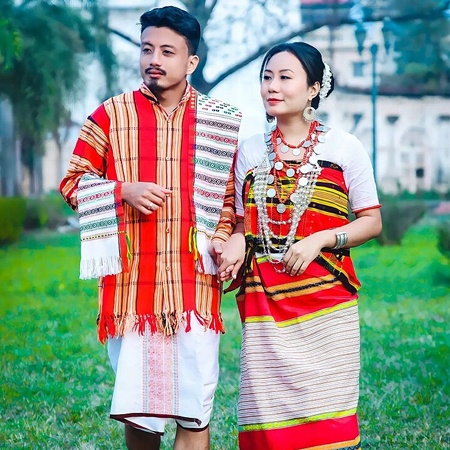
The traditional dress of Tripura consists of two-piece outfits for men and women. Women typically wear a Rinai on their lower body, paired with an intricately embroidered Risa on their upper body. The male equivalent includes the loose towel-like cloth, Rikutu Gamcha, for the lower body and a shirt called Kubai for the upper body. The Rigwnai is a broad piece of cloth that women wrap around their waist, while Risa covers the chest and Rikutu covers the whole upper body. Nowadays, most Tripuri women prefer to wear a blouse instead of Risa for convenience. The traditional dress is still worn today, especially during traditional festivals. This costume, said to date back to over 4000 years ago, is believed to be the precursor to the modern Indian saree. Different Tripuri clans have their own unique variations, though there is now intermingling among them. The Rignai and Risa fabric are designed with beautiful patterns and men like to accessorize with bead necklaces. However, these dresses are now mostly worn in rural areas and among the working class.
Mizoram
The traditional costume of Mizoram is a vibrant reflection of its rich tribal heritage, deeply rooted in the customs of the Mizo people. Women typically wear the
Puan, a handwoven wrap-around skirt featuring intricate patterns, often in black and white or bold red hues, symbolizing cultural pride. It is paired with a simple
Kawrchei, a handwoven blouse adorned with traditional motifs.
During special occasions and festivals like Chapchar Kut, women also drape the Puanchei, a more elaborate and brightly colored version of the Puan, embellished with intricate designs. Mizo men wear a short white coat called
Kawrpial, paired with a Puan or a dhoti-like lower garment, often complemented with a turban or headgear. The elegance and simplicity of Mizoram's traditional attire highlight the community's strong connection to nature and indigenous craftsmanship.
Sikkim
The Bhutia and Lepcha tribes of Sikkim have unique traditional costumes for men and women. The Bhutia tribe wears Bakhu or Kho, a cloak-style dress that is fastened at the waist with a silk or cotton belt. Both men and women wear embroidered leather boots to complement the outfit. The Lepcha men wear Thokro-Dum, which consists of a white pyjama, a shirt, an embroidered cap called Shambo and Dumpra, a multicoloured handwoven cloth attached to the shoulder and tied with a waistband. On the other hand, Lepcha women wear Dumvum, a silky ankle-length dress and Tago, a loose contrasting blouse. In addition to these traditional dresses, Sikkimese women have a variety of other ethnic dresses such as the ankle-length Dumvum and the Nyamrek, which are draped over a full-sleeved silk blouse known as honju.
Nagaland

Red is the most predominant color used in the costume of Nagaland.
Kilt and Wrapper is the traditional material and costume for men whereas women wear a
Skirt, Shawl and an Apron.
Kilt is the typical men's waist attire which loops down till the knees is generally of
light blue color.
The traditional dress for Nagaland women is the
Angami, which comprises a sleeveless top
Vatchi worn over the petticoat
Neikhro and a white skirt
Pfemhou. Women's skirt is a piece of cloth that is wrapped around the waist to cover legs. Ornaments are made of
beads, shells, tusks and horns which is worn around the neck.
The Angami and Ao have distinct and colorful traditional clothing. Angami men wear a sleeveless red and black shawl called
Lohe, sometimes with intricate patterns and a kilt-like wrap-around called
Neikhro. They also wear beaded necklaces and headgear with hornbill feathers. Angami women wear a wrap-around skirt called
Mechala, which is sometimes accompanied by a shawl and colorful beaded jewellery. The Ao tribe is known for its handcrafted shawls. Shawl designs have symbolic meanings among the Ao. Ao men wear a wrap-around cloth called
Sutpu along with a richly woven shawl like the Tsungkotepsu, which features animal and human figure motifs and symbolizes valor and success. Ao women wear colorful striped skirts called Alungstu, decorated with bold beadwork and silver ornaments. Clothing is not merely a display of aesthetic craftsmanship but also a symbol of identity, social status and tribal pride among the Nagas.
Frequently Asked Questions about Traditional Indian Costumes
1. Why do traditional costumes vary so much from one Indian state to another?
India's climate, culture and heritage differ from state to state. The fabrics, colours and styles reflect local weather, traditions and community life.
2. What makes each state's costume unique?
Every costume tells a story - from the bright mirror work of Gujarat to the elegant white kasavu saree of Kerala. The weaving techniques, motifs and accessories make each region's outfit distinct.
3. Are traditional Indian costumes only worn during festivals?
Not always. Many people still wear them daily in rural areas, while in cities they are mostly worn for celebrations, rituals and weddings.
4. What fabrics are commonly used in traditional Indian wear?
Cotton, silk, wool and linen are most common. Cotton suits hot regions, while wool and thick fabrics are used in colder states like Himachal and Jammu & Kashmir.
5. How do geography and climate influence traditional clothing?
Hot states like Rajasthan prefer light, airy cottons and bright colours. Mountain regions use wool and layers to stay warm and coastal states love breathable fabrics.
6. Why do many Indian states have their own saree draping style?
Saree drapes evolved for comfort and tradition. For instance, the Nauvari in Maharashtra allows easy movement, while the Coorg style in Karnataka reflects regional customs.
7. What are some popular men's traditional outfits across India?
Men in Kerala wear the mundu, Punjabis prefer kurta-pyjamas, Rajasthanis wear colourful turbans and Kashmiris often wear the pheran during winter.
8. How do jewellery and accessories complete a state's traditional look?
Every region has signature jewellery - silver tribal pieces from Rajasthan, temple jewellery from Tamil Nadu and conch-shell bangles from Bengal, each symbolising cultural identity.
9. Are traditional costumes still made by hand today?
Yes, many states continue using handloom weaving and embroidery. Skilled artisans keep these crafts alive, though machine-made versions are also common now.
10. Can traditional outfits be adapted for modern fashion?
Absolutely. Designers often mix regional textiles with modern cuts - like pairing a Banarasi dupatta with western wear or using ikat fabric in contemporary dresses.
11. What is the cultural importance of wearing traditional attire?
Traditional costumes represent pride, identity and heritage. They connect people to their roots and are an important part of festivals, weddings and rituals.
12. How do colours in traditional clothing carry meaning?
Yes - colours often symbolise emotions and beliefs. Red stands for purity in weddings, white for peace and yellow for prosperity in many states.
13. Why do tribal communities have different costumes from mainstream styles?
Tribal attire is often made from natural fibres, beads and handwoven fabrics. It reflects their local environment and cultural symbols unique to each tribe.
14. Which Indian states are most famous for their traditional handloom textiles?
Tamil Nadu for Kanchipuram silk, Assam for Muga silk, Gujarat for Bandhani, West Bengal for Baluchari and Odisha for Ikat are among the most well-known.
15. How are festivals and traditional costumes connected?
Festivals are when traditional clothing truly shines - like wearing bright ghagras for Navratri in Gujarat or silk sarees for Onam in Kerala.
16. Are there specific headgears or turbans linked to states?
Yes. Turbans differ in colour, size and tie - Rajasthan's pagri, Punjab's turban and Himachal's colourful cap all represent local pride.
17. How have modern designers preserved traditional clothing styles?
Many designers work with weavers and artisans to blend old techniques with new silhouettes, keeping traditions alive while appealing to younger generations.
18. Do traditional Indian costumes promote sustainable fashion?
Yes, many are handwoven, naturally dyed and made from eco-friendly fibres - making them sustainable long before sustainability became a trend.
19. How do regional costumes reflect social and cultural values?
The clothing often indicates community, occasion and status - for example, specific colours or ornaments are worn by brides, elders or dancers in different states.
20. Why is it important to preserve traditional costumes of India?
They are a living record of our history, craftsmanship and identity. Supporting traditional clothing helps keep thousands of local artisans employed.



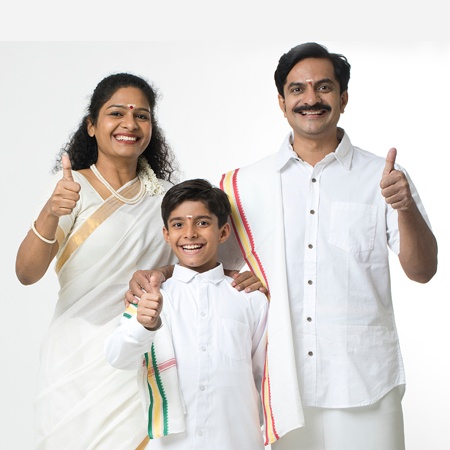


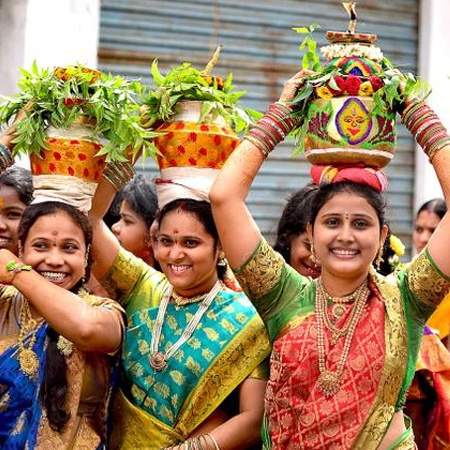




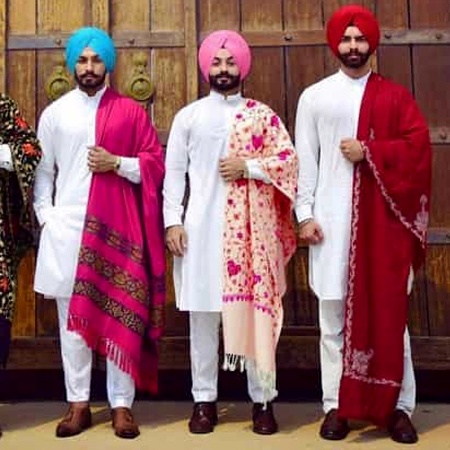




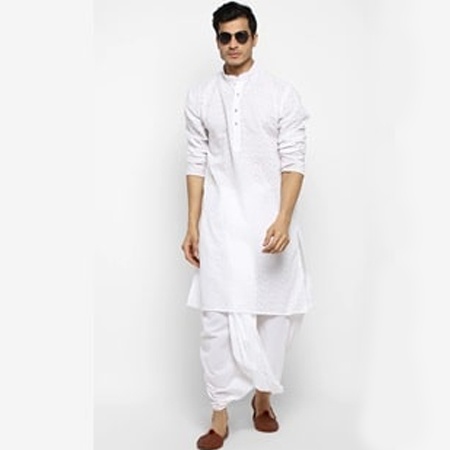





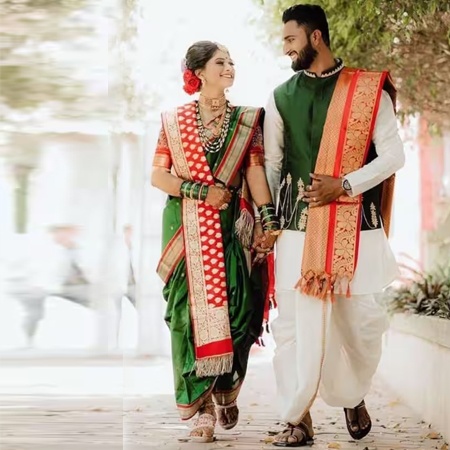

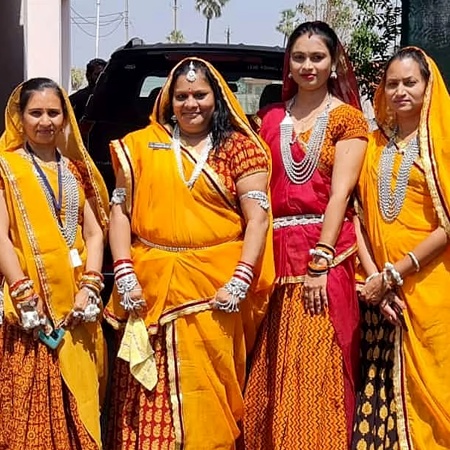
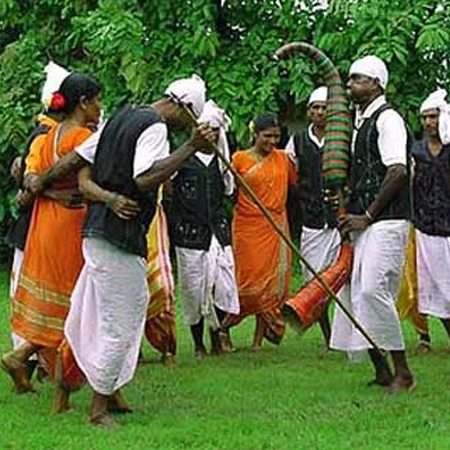

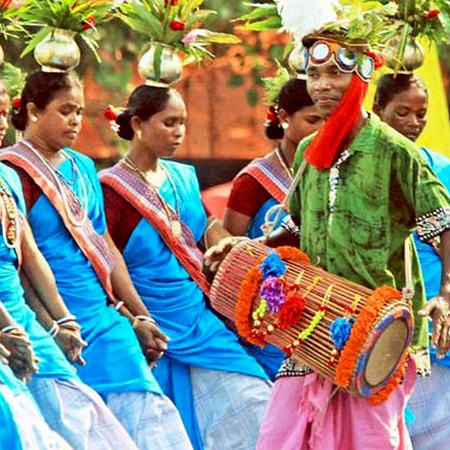
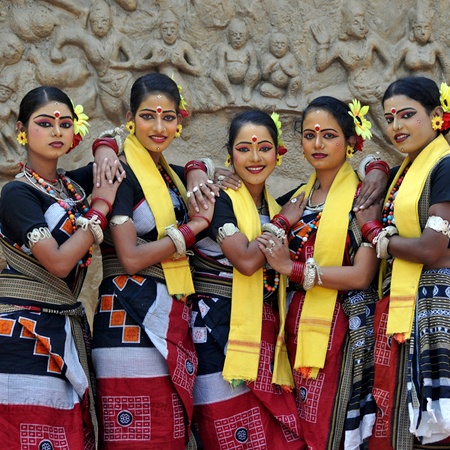




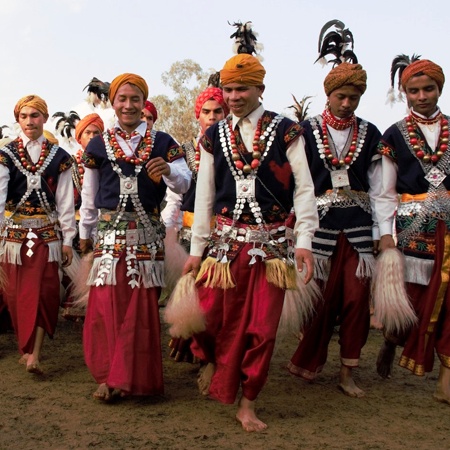


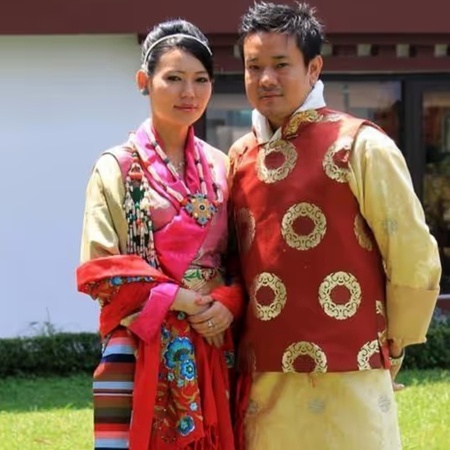

 CONTACT USWaves Institute of Fashion Designing,
CONTACT USWaves Institute of Fashion Designing,